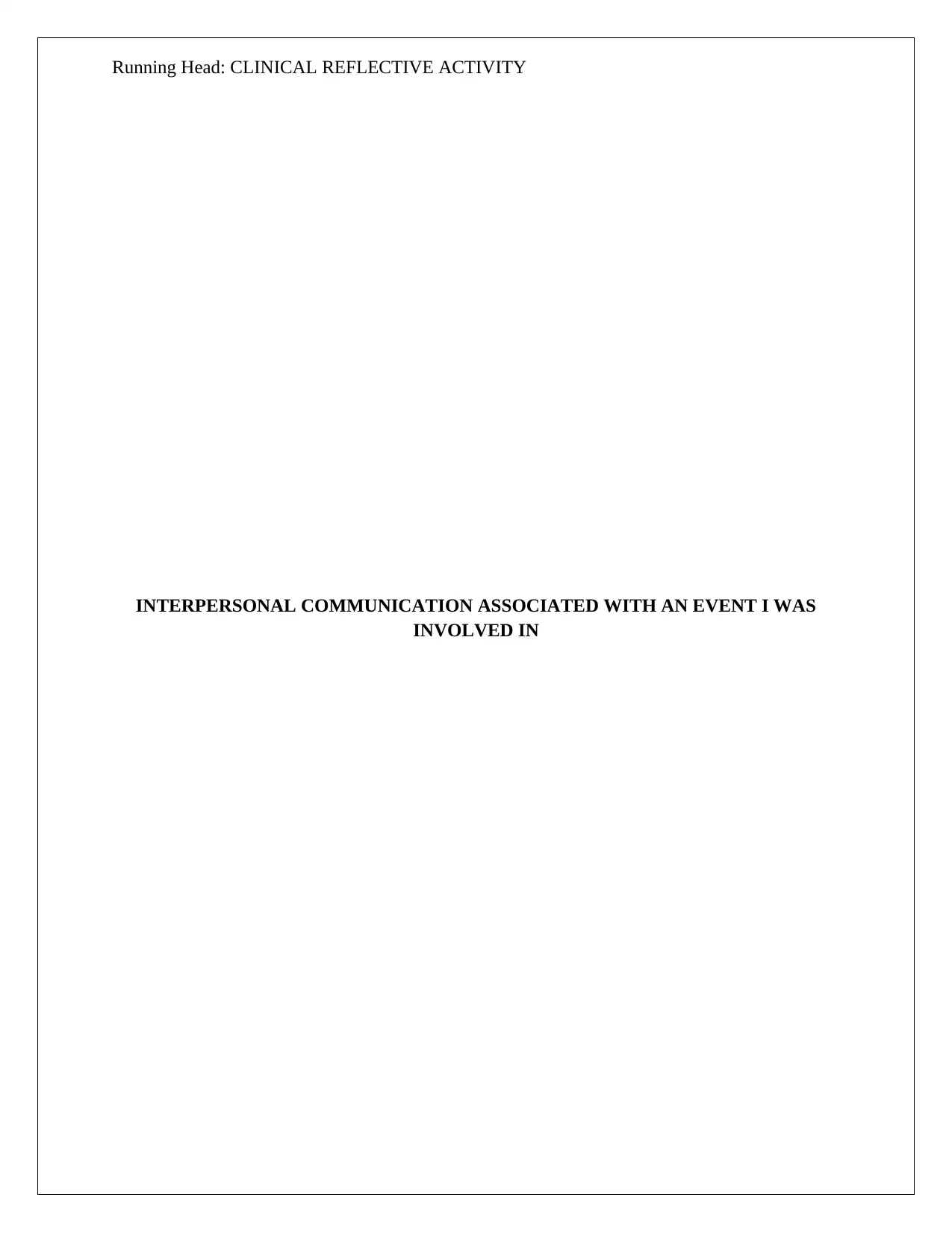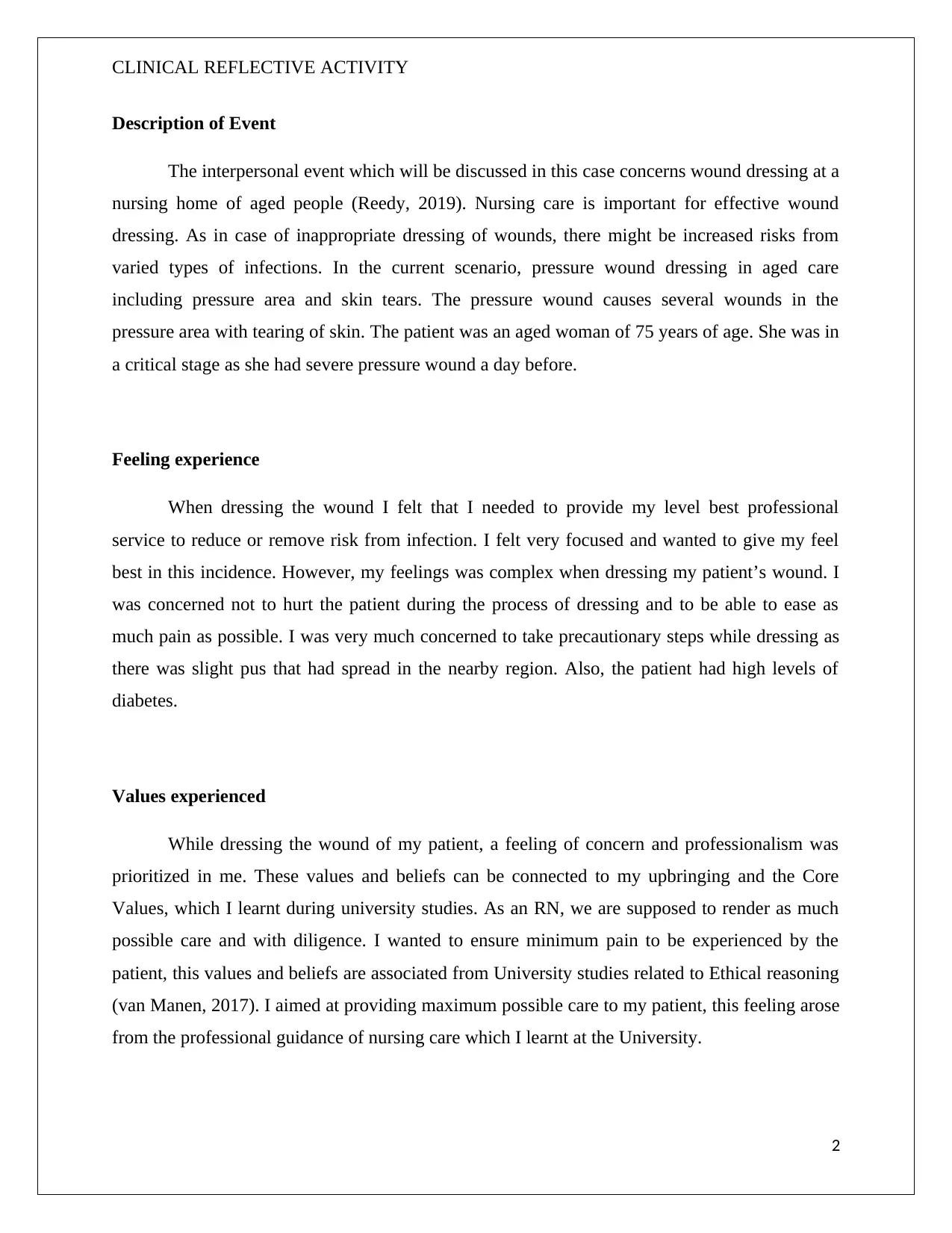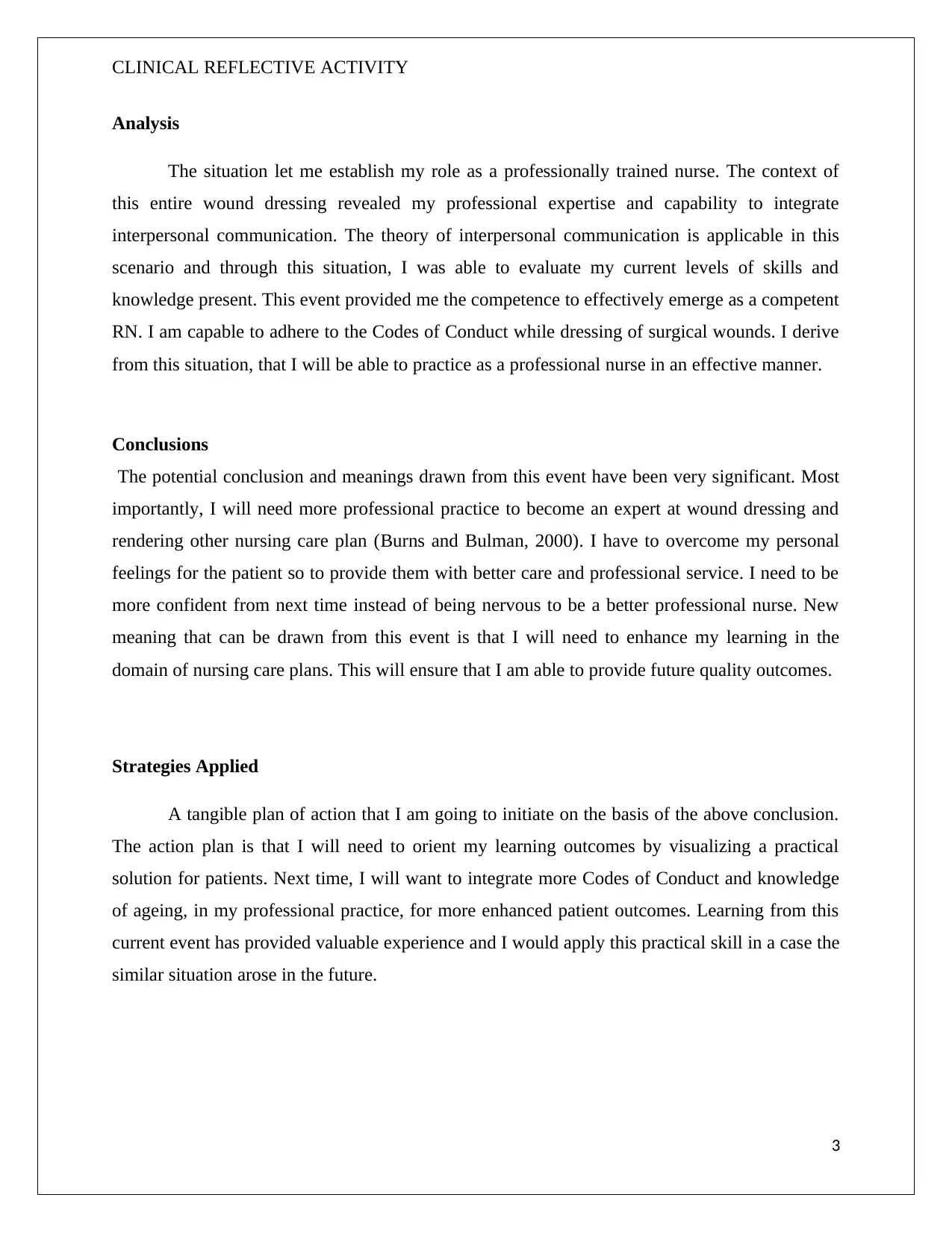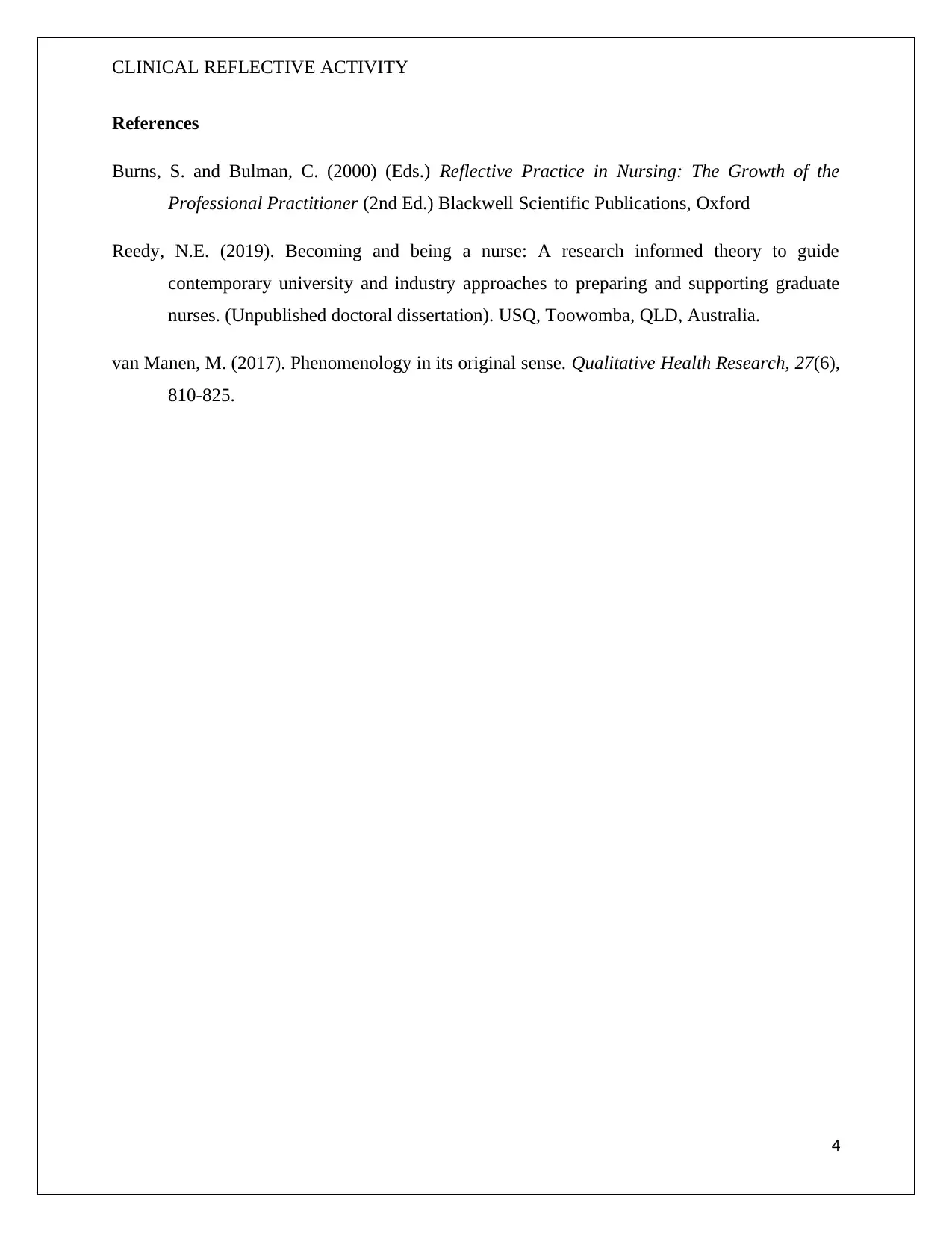NUR2299: Clinical Reflection on Interpersonal Communication Event
VerifiedAdded on 2022/09/14
|4
|816
|14
Practical Assignment
AI Summary
This clinical reflective activity, completed for the NUR2299 course, provides a detailed account of a nursing student's experience with wound dressing in a nursing home setting. The assignment centers on the interpersonal communication associated with the event, specifically the interactions with an elderly patient during the wound dressing process. The student reflects on their feelings, values, and beliefs during the event, using Gibbs' reflective cycle to analyze the situation and draw conclusions about their professional development. The analysis highlights the application of interpersonal communication theory and assesses the student's current skill levels. The conclusion emphasizes the need for further professional practice and enhanced learning in nursing care plans to improve patient outcomes. The student outlines a plan of action involving practical solutions, integration of Codes of Conduct, and knowledge of aging to improve future patient outcomes. The assignment demonstrates the student's ability to apply reflective practice to improve their future nursing practice.
1 out of 4











![[object Object]](/_next/static/media/star-bottom.7253800d.svg)